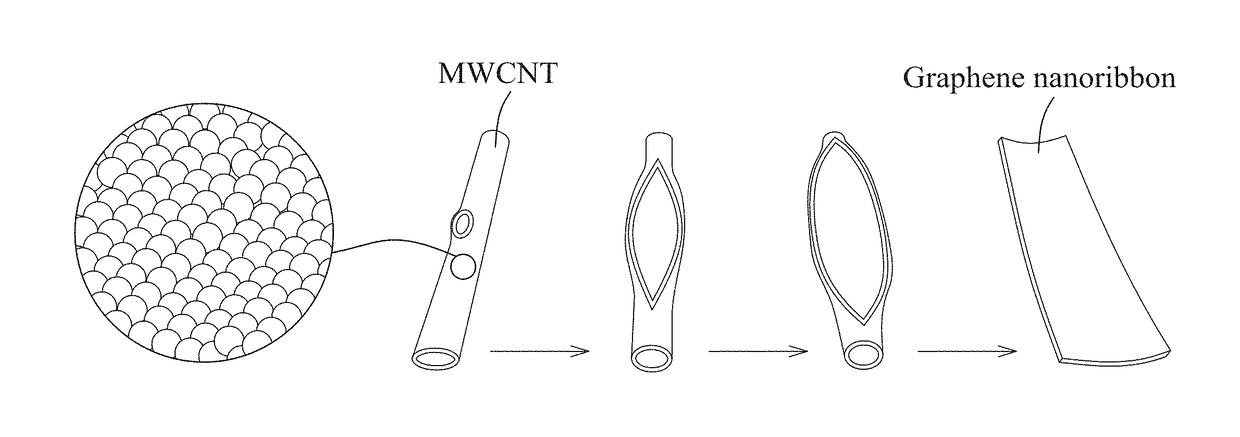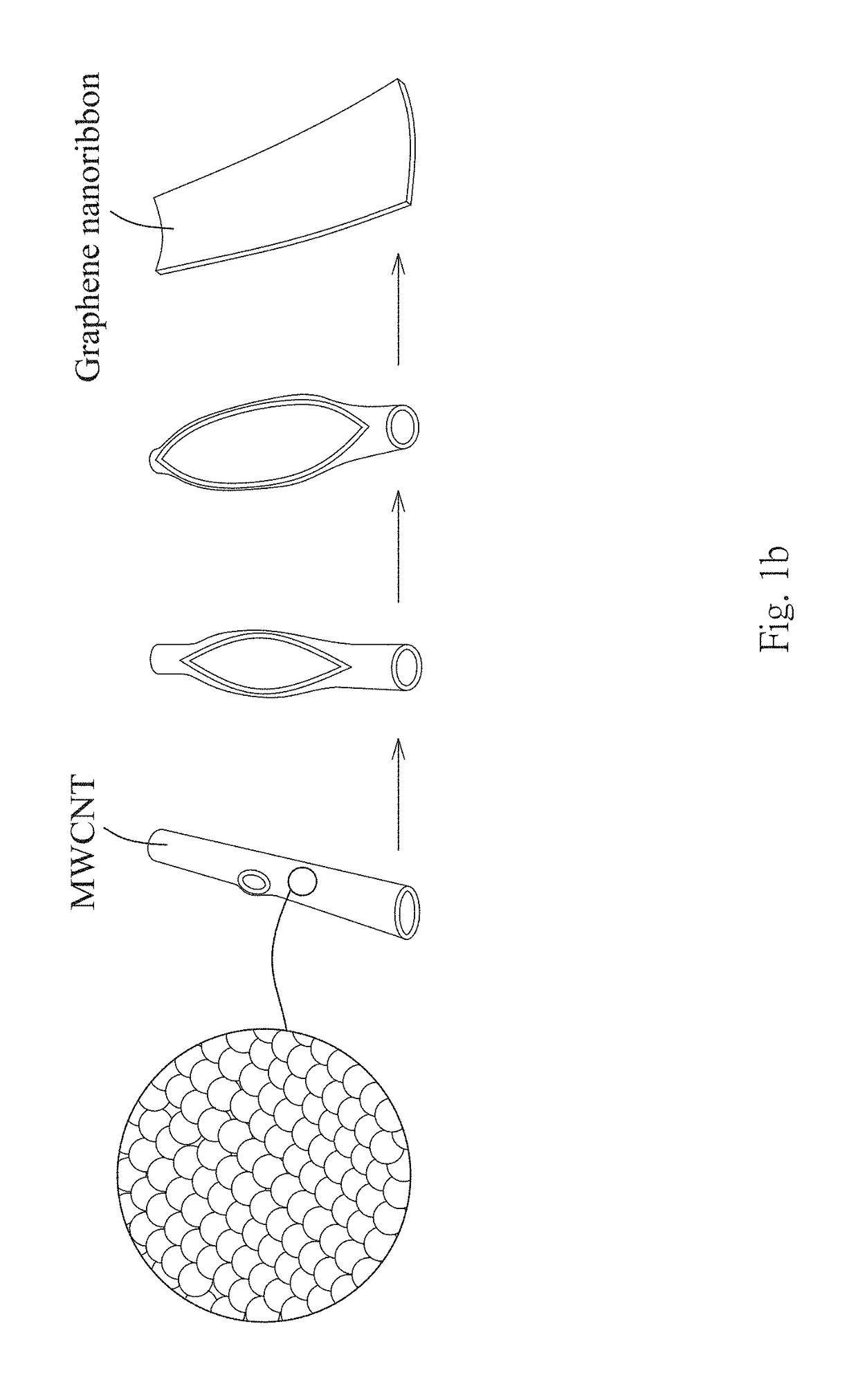Modified graphene, method for producing a modified graphene and applications thereof
a technology of modified graphene and graphene, which is applied in the direction of graphene, carbon compounds, and nano-carbons, can solve the problems of complex process, achieve the effects of optimizing material dispersion, reducing the total amount of concentrated sulfuric acid, and increasing the proportion of oxygen-containing functional groups
- Summary
- Abstract
- Description
- Claims
- Application Information
AI Technical Summary
Benefits of technology
Problems solved by technology
Method used
Image
Examples
example 1
[0033]The first preferred embodiment of a graphene nanoribbon (one-dimensional) is described in detail below.
[0034]Referring to FIG. 1a, multi-walled carbon nanotubes (MWCNTs) were added in a solution containing potassium nitrate and sulfuric acid, and the ratio of potassium nitrate to sulfuric acid is 1 g:10 ml. Nitrate dissociated from the potassium nitrate and sulfate dissociated from sulfuric acid both were intercalated or inserted in the spacing between interlayers of the multi-walled carbon nanotubes or between nanotube and nanotube, weakening the binding force between multi-walled carbon nanotube. The binding force or attractiveness refers to energy, such as Van der Waals force, linking interlayers of multi-walled carbon nanotube, or tube and tube. In the present example, nitrate:sulfuric acid:carbon substrate is at a ratio of 1 g:10 ml:0.1 g.
[0035]Referring to FIG. 1b, potassium permanganate was added in, and, then, the mixed solution was heated to 30 to 70° C. for 1 to 2 ho...
example 2
[0049]The present invention may be further applied on modified graphene synthesized from two-dimensional graphite. The second preferred embodiment of modified graphene (two-dimensional) is described in detail below.
[0050]Graphite was added in a solution containing potassium nitrate and sulfuric acid. Nitrate and sulfate were both intercalated or inserted in between the layers of graphite, such that the binding force between the layers of graphite was weakened.
[0051]Further, the pretreated graphite was exfoliated by sonication in 20 minutes to generate the modified graphene. The above graphite was substituted with graphite oxide.
[0052]
TABLE 4H2SO4 (ml)KNO3 (g):Graphite (g)Yield (%)1000:0.122100:0.117.53100.5:0.1 20.62101:0.123.72
[0053]Referring to Table 4, 0.1 g graphite was treated by 10 ml sulfate acid (H2SO4), and the yield is only 17.53% without KNO3. The yield is higher when the graphite is pretreated by KNO3 and H2SO4. Thus, this preferred embodiment shows a greater modified gr...
PUM
| Property | Measurement | Unit |
|---|---|---|
| yield rate | aaaaa | aaaaa |
| yield rate | aaaaa | aaaaa |
| binding force | aaaaa | aaaaa |
Abstract
Description
Claims
Application Information
 Login to View More
Login to View More - R&D
- Intellectual Property
- Life Sciences
- Materials
- Tech Scout
- Unparalleled Data Quality
- Higher Quality Content
- 60% Fewer Hallucinations
Browse by: Latest US Patents, China's latest patents, Technical Efficacy Thesaurus, Application Domain, Technology Topic, Popular Technical Reports.
© 2025 PatSnap. All rights reserved.Legal|Privacy policy|Modern Slavery Act Transparency Statement|Sitemap|About US| Contact US: help@patsnap.com



